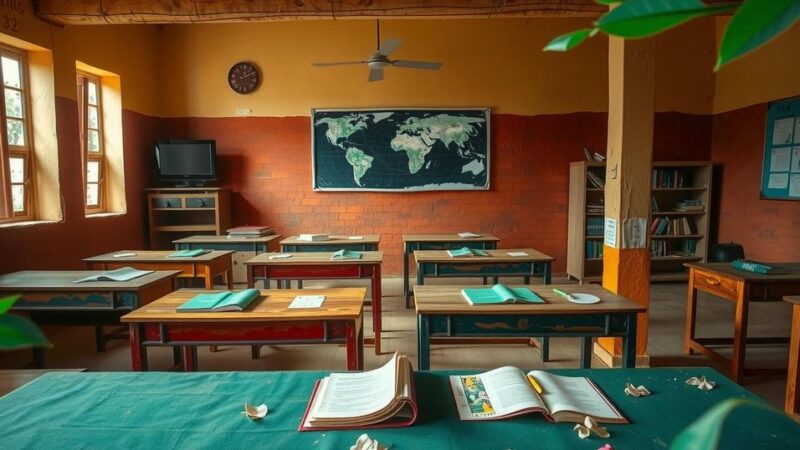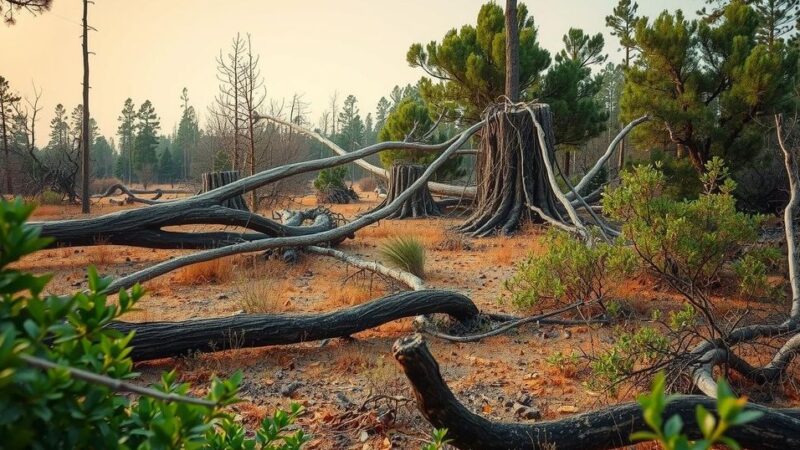In northern Colombia, the Wayuu people are grappling with the adverse effects of climate change, including worsening droughts and floods leading to significant food insecurity and displacement. Many Wayuu live in informal settlements without basic services. Climate shifts have led to property damage and health risks, particularly for migrant Wayuu from Venezuela. Community leaders emphasize the urgent need for resources and support amid increasing challenges.
In northern Colombia’s La Guajira region, the Wayuu people endure severe effects of climate change, with droughts and heavy rainfall leading to food insecurity, flooding, and displacement. Nelly Mengual, a resident of an informal settlement in Riohacha, shares her experience of losing her roof during intense flooding, highlighting the vulnerability of the Wayuu people, many of whom migrated from Venezuela due to economic crises, now living without essential services such as running water or electricity.
The Wayuu, Colombia’s largest Indigenous group, face compounded challenges from climate change as prolonged droughts and sudden floods disrupt their way of life. These climatic shifts often from severe weather conditions lead to the destruction of homes, crops, and health risks. Many families are compelled to migrate, further straining urban areas lacking capacity to accommodate additional populations.
Community leader Ingrid Gonzalez notes the fragility of traditional Wayuu shelters during heavy rains, while Samuel Lanao, head of the region’s environmental authority, speaks of significant losses incurred from extreme weather events and an increase in vector-borne diseases, such as dengue, affecting Indigenous communities. In response, environmental initiatives have been proposed to enhance community resilience against climate change.
The changing climate is apparent to those in the area, such as Camilo Martinez from the Danish Refugee Council, who has witnessed alterations in weather patterns over 14 years. Significant changes include variations in rainfall seasons and increased temperatures, corroborated by scientific studies highlighting these drastic climate shifts in La Guajira.
Sustaining a traditional lifestyle remains difficult, especially within informal settlements where access to clean water is limited. Residents are resorting to purchasing untreated water, often transported by mule, compromising health. An ethical concern arises as many are forced to use unsafe water for cooking and washing due to theft from rainwater collection, hampering their access to clean supplies.
Leaders like Anibal Mercado criticize government neglect and neoliberal policies that undermine the traditional means of subsistence for the Wayuu, contributing to economic hardship. Efforts to recover continue, with many individuals, including Laura Pushaina, weaving traditional crafts to make a living amidst recurring floods and losses. Many Wayuu express hope of returning to their ancestral lands once conditions improve, but remain trapped by ongoing instability in Venezuela and dire local living conditions.
The Wayuu people’s situation in northern Colombia is a reflection of the severe impact of climate change, manifesting through droughts and floods that exacerbate food insecurity and displacement. With traditional livelihoods challenged, the Wayuu face increased health risks and the struggle for essential resources. Government response has been inadequate, forcing reliance on non-governmental organizations. The resilience of the Wayuu community is evident as they work persistently to rebuild their lives, hoping for stability and conditions conducive to a return to their lands.
Original Source: www.independent.co.uk






